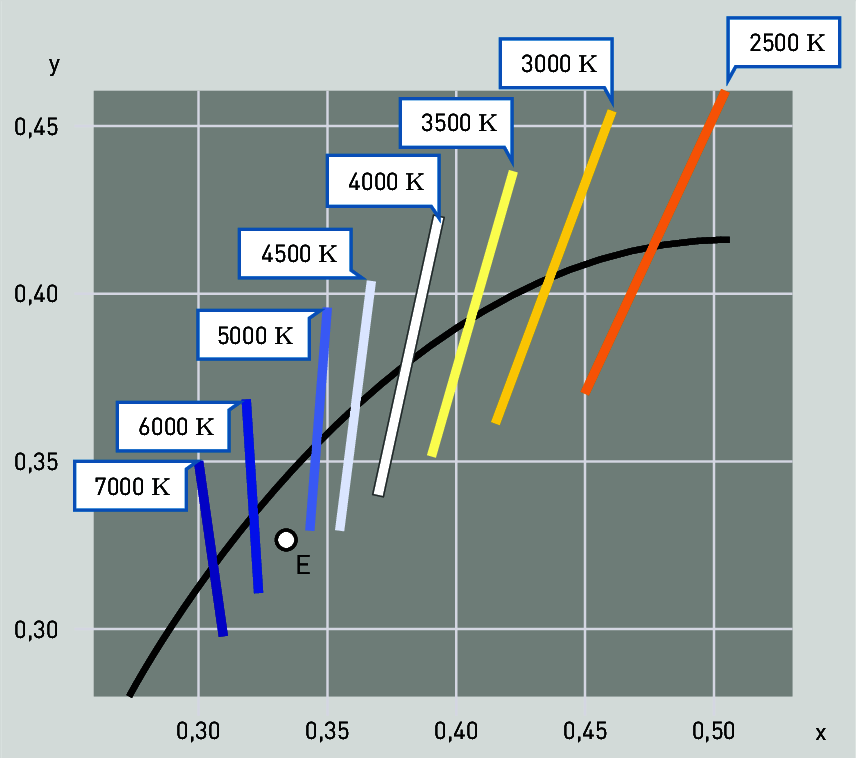The light colour of a light source is expressed by the closest colour temperature Tcp (température de couleur proximale). The closest colour temperature is the temperature of heated platinum where its colour is perceived to be the same as the respective light source (see figure). Low closest colour temperatures express warm, yellow-red-white appearing light colours such as e.g. candles, incandescent lamps and other thermal radiators. High temperatures express cool, rather white-blue light colours such as e.g. daylight with ca. 6,500 K (overcast sky).
Light colour
The European lighting standards give no recommendations on light colours of the used light source since their preferential choice amongst other things highly depends on what people from different regions in Europe perceive as natural light. Therefore, the choice of a suitable light colour strongly depends on regional adaption, especially in terms of how daylight appears in indoor spaces. In general, high colour temperatures, for example daylight white, are preferred in warm climate zones, even at low levels of illuminance. In cold climate zones, low colour temperatures and therefore warm white light colours are preferred.

Figure 3.254: Extract from the standard colour table according to CIE 1931 with Planckian curve representing the light colour of the heated platinum. The closest colour temperatures of e.g. fluorescent lamps are marked. E is the white point.

Table 3.168: Light colour and closest colour temperature according to EN 12464-[48]
The choice of the light colour also depends on the application – meaning the visual task – and factors concerning aesthetics and psychology, room and furniture colours as well as the spatial effect of the environment. Based on recent findings, the daytime utilisation of a room also should not be neglected. Especially for rooms with extended operating times compared to the common rhythm of work, the circadian function of light is of utmost importance. Not only the light colour but also the detailed spectral composition of light has an impact. Regarding areas with night shift operation, the biological clock should not be excessively affected. In areas with early starts of work and minimal daylight supply, artificial lighting should actively support the circadian rhythm (see chapter 3.3.1 “Human Centric Lighting (HCL)” ff). Table 9.4 shows the international labelling of light colours independent of manufacturers. In addition, it provides the colour rendering of the light source, which will be explained in the subsequent paragraph.